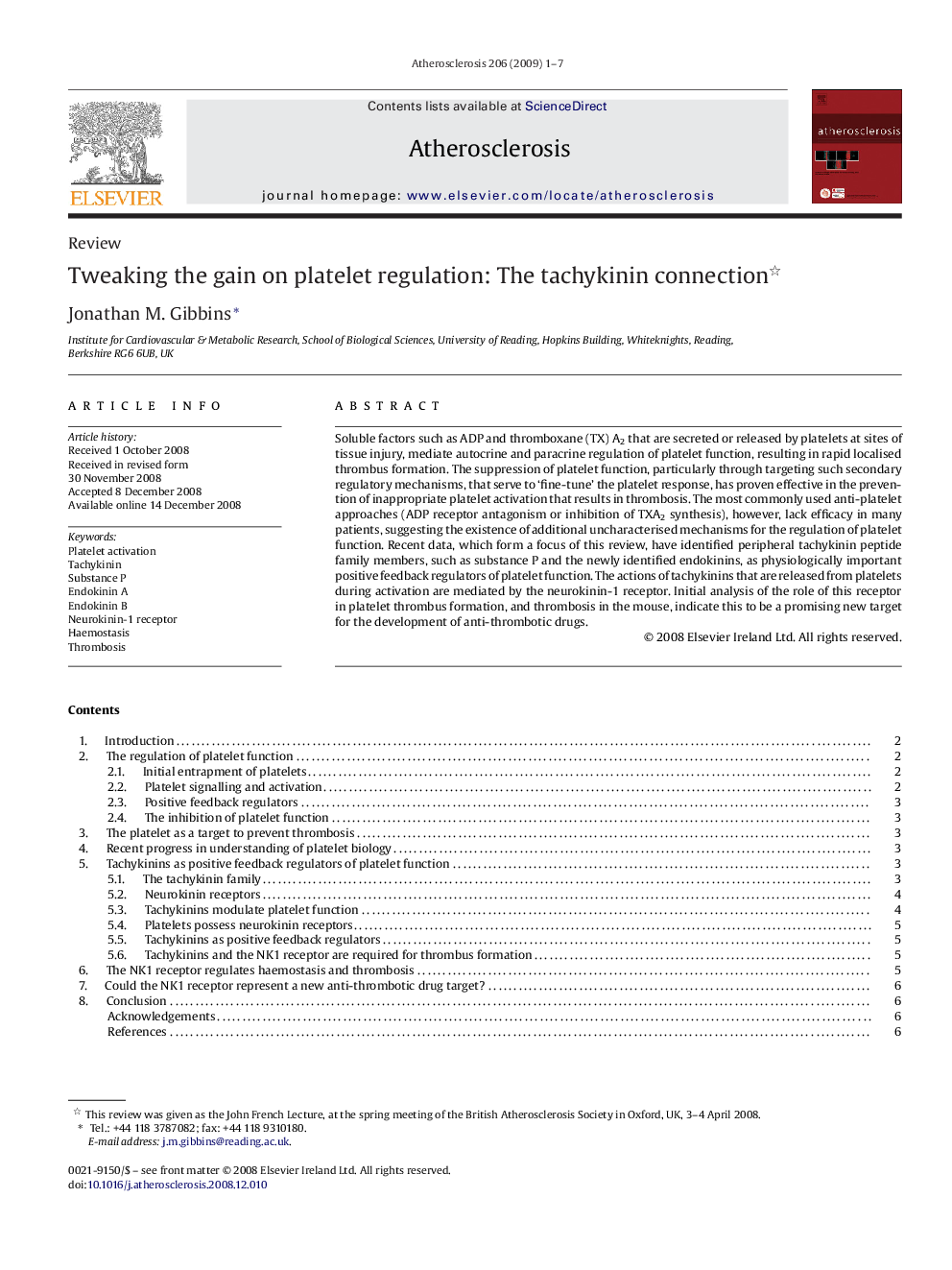| Article ID | Journal | Published Year | Pages | File Type |
|---|---|---|---|---|
| 2893261 | Atherosclerosis | 2009 | 7 Pages |
Soluble factors such as ADP and thromboxane (TX) A2 that are secreted or released by platelets at sites of tissue injury, mediate autocrine and paracrine regulation of platelet function, resulting in rapid localised thrombus formation. The suppression of platelet function, particularly through targeting such secondary regulatory mechanisms, that serve to ‘fine-tune’ the platelet response, has proven effective in the prevention of inappropriate platelet activation that results in thrombosis. The most commonly used anti-platelet approaches (ADP receptor antagonism or inhibition of TXA2 synthesis), however, lack efficacy in many patients, suggesting the existence of additional uncharacterised mechanisms for the regulation of platelet function. Recent data, which form a focus of this review, have identified peripheral tachykinin peptide family members, such as substance P and the newly identified endokinins, as physiologically important positive feedback regulators of platelet function. The actions of tachykinins that are released from platelets during activation are mediated by the neurokinin-1 receptor. Initial analysis of the role of this receptor in platelet thrombus formation, and thrombosis in the mouse, indicate this to be a promising new target for the development of anti-thrombotic drugs.
